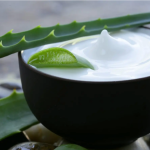With millions of new concussions happening every year, brain injuries are quickly becoming a prominent concern for people of all ages. The standard of care is rapidly progressing from the old advice of “sleep it off.” This article will outline the nine most effective tips to manage symptoms at home. It will also provide guidelines to follow to ensure you seek the most appropriate care if the symptoms persist.
Concussion Basics
A concussion happens when the brain shakes inside the skull. The short-term effects occur because of imbalances in the chemicals in the brain due to disruptions in the sodium/potassium levels inside and outside the cell. This can disrupt normal brain function and cause a range of neurological symptoms. These symptoms may include headaches, dizziness, confusion, balance problems, mood changes, and difficulty concentrating and memory. It’s important to recognize these signs and respond quickly to help reduce potential problems and support recovery.
Immediate Actions Post-Injury
The moments following a concussion are crucial. The steps you should undertake are as follows:
1. Seek Medical Attention
Remember to see a doctor right after an injury to ensure there are no serious long-term effects. This could include brain bleeds, fractures, or swelling in the skull. The doctor might perform an MRI, CT scan, or X-ray to check for any significant problems. If you experience symptoms like slurred speech, numbness, confusion, or seizures, it’s essential to see a doctor right away.
2. Ensure Adequate Rest
Remember, after a concussion, it’s essential to rest physically and mentally. During the initial recovery stage, the energy crisis, the brain focuses on healing damaged tissue and needs plenty of rest. This stage usually lasts 5-14 days, depending on severity. It’s still essential to follow the old advice of resting in a dark room during this time. However, after this recovery window, the brain shifts into the “adaption phase,” where it actively reorganizes to function better. Resting for too long past the recommended timeline may make recovery more difficult in the long term, as the brain can adapt to a quiet, dark room.
3: Resume light activity
Once you’re ready to start being active again, take your time and slowly increase your activity level. After the initial crisis, your brain is adjusting to a new normal. Doing more challenging activities will help your brain continue to change in the right way.
Physical Activities:
Start with light activity and gradually increase as you can without making symptoms worse. Swimming or using a stationary bike can be easier on the brain. The Buffalo Concussion Treadmill Test is the best way to prevent long-lasting autonomic symptoms and find stubborn symptoms that could slow recovery.
Cognitive Activities:
Start with easy tasks that don’t require much focus, then gradually move on to more challenging activities. Increase the difficulty as you feel comfortable. Take breaks and use timers to make sure you don’t overdo it. As you progress, you can add screen time and tasks requiring more thinking and eye movement.
4: Consult Specialty Care if Symptoms Persist
Suppose you have finished the Buffalo Concussion Treadmill Protocol but still have symptoms. In that case, it should be clear what isn’t healing correctly. The symptoms that continue during testing will help you find the right specialist. Ask your primary doctor which specialist you should see based on your remaining symptoms.
Best Practices for At-home Concussion Management
A comprehensive at-home concussion toolbox should have nutrition, supplementation, Sleep, mental health, stress management, and symptom recognition strategies. The following is a list of resources you can use to accelerate recovery.
1: Omega-3 Fatty Acids
Be sure to consume foods high in essential nutrients for nerve and brain function, such as fish oil, walnuts, and flaxseeds. It’s recommended to start with 3 grams of fish oil three times a day for the first week, then reduce to 3 grams twice a day for the second week.
2: Antioxidants:
Remember that foods rich in antioxidants can help prevent tissue damage caused by oxidative stress. Good choices include berries, nuts, and green leafy vegetables. You can also support this process by taking supplements such as liposomal glutathione, turmeric, resveratrol, and vitamin D. It’s crucial to support this process during recovery, as it helps the brain clear out waste products from the injury.
3: Blood Sugar Management
After a concussion, it’s essential to control your blood sugar. Changes in blood sugar levels can affect how your brain works and may make it take longer to get better. Eating regular, healthy meals and snacks can help keep your blood sugar stable and give your brain the energy it needs to heal. It’s best to avoid sugary snacks and choose foods packed with nutrients to help manage your blood sugar during recovery.
4: Electrolyte Supplementation
Ensure you supplement with electrolytes to stay hydrated and maintain your electrolyte balance. Electrolyte imbalances in the cells are the brain’s immediate concern, so providing high-quality electrolytes early and regularly is essential. Look for a supplement with magnesium in the form of glycinate or threonate, as these types are better at crossing the blood-brain barrier and aid in absorption.
5: Alcohol and caffeine:
During the first month of recovery, avoid consuming these items as they act as diuretics, causing the body to excrete more water. Since the brain is mainly made up of water and fat, staying hydrated is essential to support a fast recovery.
6: Gluten, Dairy, Seed Oils and Sugar:
Cut out foods that cause inflammation, such as gluten, dairy, seed oils, and sugar, even if they don’t bother you. This can help reduce nutritional stress in the short term and provide long-term benefits, particularly as concussions often lead to gastrointestinal issues.
7: Optimize Sleep
Follow these steps for a good sleep routine:
- Don’t eat anything for three hours before bed
- Keep the lights dim two hours before bed
- Avoid screens one hour before bed
- Get sunlight in your eyes as soon as you wake up
- Use red light or wear red-tinted glasses before bed
- Take a warm shower at night
- Try to go to bed at the same time every night
8: Focus on Mental Health and Stress Management
Remember the following tips to support your mental health and recovery after a concussion:
- Practice meditation and mindfulness
- Consider talk therapy
- Journal the struggles and symptoms that arise throughout the day
- Consider joining a support group
- Explore cold exposure and red light therapy
- Consider using external vagal nerve stimulators to support your recovery
It’s important to talk about your struggles instead of keeping them inside. Find someone you trust and share your concerns. Every concussion is different, and people heal uniquely.
9: Symptom Documentation
Remember to keep track of your daily symptoms, how strong they are, and how they affect your daily life. This record will help you monitor how you’re doing and talk about it with your healthcare provider. That way, they can give you advice that’s just right for you. This record also helps you see if your symptoms are getting better over time and figure out when they’re the worst. Knowing about these symptoms can help you plan and determine which areas you still need help with.
Conclusion
Navigating through a concussion recovery can be a unique and challenging experience. This article offers valuable resources to help accelerate the healing process and increase the likelihood of a complete recovery without complications. Being patient, understanding your limitations, and treating yourself compassionately is essential. Each recovery journey is unique. Lingering symptoms don’t signify a permanent condition; they indicate the need for specialized care to alleviate them fully. With the appropriate assistance, a full recovery is achievable.
Lynn Martelli is an editor at Readability. She received her MFA in Creative Writing from Antioch University and has worked as an editor for over 10 years. Lynn has edited a wide variety of books, including fiction, non-fiction, memoirs, and more. In her free time, Lynn enjoys reading, writing, and spending time with her family and friends.















